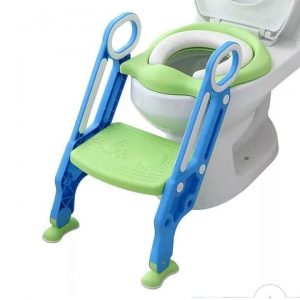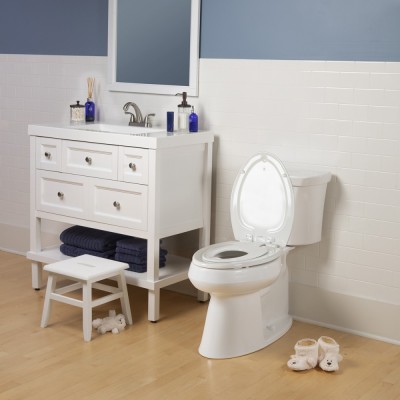Potty training! It’s a milestone that fills parents with both excitement and a touch of trepidation. You might be wondering, “When is my child ready?” or “What’s the best way to approach it?” Breathe easy! . We’ll cover everything from spotting the signs of potty training readiness to choosing the perfect potty seat, and from signs that your child is ready to start, by using chart and night training tips.
When to Start Potty Training:
The right age to start potty training varies. Most children begin between 18-24 months, but it’s essential to watch for readiness signs rather than focusing on age alone.
For more detailed information, check out external resources like the American Academy of Pediatrics for addititional
Remember, every child is different, and patience is key.
Signs Your Child is Ready for Potty Training:
The key to successful training lies in recognizing when your toddler is truly ready. Here are some telltale signs:
- Increased Interest: Does your little one show curiosity about the toilet? Maybe they peek in while you’re using it or ask questions about how it works.
- Staying Dry Longer: Are they keeping their diaper dry for longer stretches during the day (around 2 hours)? This indicates developing bladder control.
- Discomfort in Wet Diapers: Does your toddler seem bothered by being wet or dirty? This shows an awareness of their bodily functions.
There are fantastic resources available to help you identify readiness. Check out the “Big Little Feelings Potty Training” guide.

Using a Potty Training Seat and Toilet:
Choosing the right potty training seat can make a big difference. Whether you go for a potty chair or a seat that fits on the regular toilet, ensure it’s comfortable and safe for your child. A comfortable and secure potty seat can make a world of difference in your child’s potty training journey. Here’s what to keep in mind:
- Size: The seat should be the right size for your toddler’s legs to comfortably straddle it. This ensures proper positioning and prevents accidents.
- Design: Fun characters or colorful designs can be motivating for toddlers.
- Ease of Cleaning: Let’s face it, accidents happen. Choose a seat that’s easy to clean and disinfect.

Potty Training Chart:
This chart is a great tool to help motivate and track your child’s progress. You can customize it with stickers, stamps, or drawings to make it engaging and fun. Here’s a simple example of a training chart you can use:
Potty Training Chart:
| Day | Morning | Afternoon | Evening | Night | Reward |
|---|---|---|---|---|---|
| Monday | |||||
| Tuesday | |||||
| Wednesday | |||||
| Thursday | |||||
| Friday | |||||
| Saturday | |||||
| Sunday |
Instructions:
- Morning, Afternoon, Evening, Night:
- Mark each time your child successfully uses the potty.
- You can use stickers, smiley faces, or checkmarks.
- Reward:
- Decide on small rewards for each day or week.
- Rewards can be a favorite treat, extra playtime, a small toy, or a fun activity.
Example of a Filled Chart:
| Day | Morning | Afternoon | Evening | Night | Reward |
|---|---|---|---|---|---|
| Monday | 😊 | 😊 | 😊 | 😴 | Sticker |
| Tuesday | 😊 | 😊 | ❌ | 😴 | Extra story |
| Wednesday | 😊 | 😊 | 😊 | 😴 | Small toy |
| Thursday | 😊 | ❌ | 😊 | ❌ | Extra playtime |
| Friday | 😊 | 😊 | 😊 | 😴 | Treat |
| Saturday | 😊 | 😊 | 😊 | 😴 | Favorite activity |
| Sunday | 😊 | 😊 | 😊 | 😴 | Family outing |
Tips for Using the Training Chart:
- Consistency:
- Consistently encourage and remind your child to use the potty at the designated times.
- Celebrate Success:
- Celebrate each success with positive reinforcement and the agreed-upon rewards.
- Be Patient:
- Understand that accidents will happen. Use them as learning opportunities without negative reactions.
- Personalize:
- Customize the chart to fit your child’s preferences and interests to keep them motivated.
By using this training chart, you can make the process more structured and enjoyable for both you and your child.
Potty Training in 3 Days:
The 3-day training method is popular for its quick results. Here’s a brief overview:
- Preparation: Clear your schedule and gather supplies.
- Training: Stay with your child and encourage frequent potty trips.
- Reinforcement: Celebrate successes and handle accidents calmly.
Potty Training Boys and Girls:
Boys and girls can have different challenges when training. Encourage boys by letting them see older siblings or parents using the toilet. For girls, remind them to wipe from front to back to avoid infections.
Potty Training at Night:
Nighttime training often takes longer than daytime training. Here are some tips to navigate this stage:
- Limit Fluids Before Bed: Reduce the amount of fluids your child drinks close to bedtime to minimize the need to go during the night.
- Nighttime Potty Break: If your child sleeps through the night without waking to use the potty, consider a nighttime wake-up (around midnight) to avoid accidents.
- Nighttime Diapers: Absorbent nighttime diapers can be a lifesaver during this transition period.
Potty Training Diapers:
Transitioning from diapers to underwear is a big step. Consider using training diapers, which can be helpful during the transition phase, especially at night.
NS2 Toilet Seat:
Some parents find that a specific toilet seat, like the NS2 toilet seats, helps with training. It’s designed for comfort and ease of use, making the process smoother for both parent and child.

Potty Bathroom Setup:
Set up a potty-friendly bathroom. Keep the potty chair accessible, and have a step stool and wipes within reach to encourage independence.
How to Start Toilet Training:
Starting toilet training can be daunting. Here are some steps to begin:
- Introduce the potty chair
- Encourage sitting on the potty
- Celebrate every success
Conclusion:
Potty training is a crucial milestone that requires patience and understanding. By recognizing the signs of readiness, using effective methods like the 3-day training, and addressing the specific needs of boys and girls, you can make this transition smoother for your child. Utilize a training chart to track progress, and remember that night training may take longer.
Whether using a special training seat or managing big little feelings, each step brings your child closer to independence. Start your training journey today and watch your child achieve this important milestone with confidence! Additionally, integrating effective parenting tips can help balance work and personal life, ensuring that you can provide the support and attention your child needs during this important time.
FAQS:
What age is best to potty train?
There’s no magic age for training. It depends on your child’s individual development. Look for signs of readiness around 18-24 months, but some children might not be ready until 3.
2. What is the 3-day potty training method?
This method involves intensive training over three days, with your child going diaper-free and using a potty chair most of the time. It can be effective, but it’s important to manage expectations and be prepared for accidents. Patience and positive reinforcement are key!
3. How do you potty train?
There’s no single “best” method. Here are some general tips:
- Look for readiness signs: Does your child show interest in the toilet, stay dry for longer periods, or seem bothered by wet diapers?
- Choose a potty seat: Make it comfortable and fun for your child.
- Start slow: Let your child get used to the potty chair.
- Positive reinforcement: Celebrate successes, no matter how small!
- Be patient: Accidents happen; it’s a learning process.
4. What is the best potty training method?
The best method depends on your child and your family. Consider their personality, your schedule, and what feels comfortable for everyone.
5. Which gender is easier to potty train?
Generally, girls may develop bladder control slightly earlier than boys, but it varies. Ultimately, readiness is more important than gender.
6. When to start potty training signs?
Look for these signs:
- Increased interest in the toilet
- Staying dry for longer stretches
- Discomfort in wet diapers
- Mimicking grown-ups using the toilet
7. What is a potty training toilet called?
There isn’t a specific name for a potty training toilet. It can be a potty chair, a potty seat that fits on your regular toilet, or even a step stool to help your child reach the regular toilet.
8. What is the best age to potty train?
Again, there’s no single “best” age. Focus on your child’s readiness rather than a specific age range.
Additional Resources:
American Academy of Pediatrics (AAP)
Big Little Feelings Potty Training Guide
Mayo Clinic Potty Training Tips
Parents.com Potty Training Advice
- Website: Parents.com – Potty Training

Empowering parents to raise happy, confident kids. Get practical parenting tips and advice on our blog, Smart Parent Guides.
